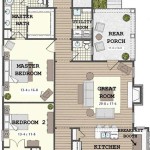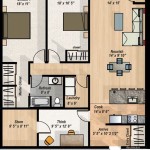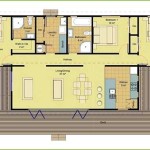House Plans For Elevated Homes
Elevated homes are becoming increasingly popular due to their elevated position, which offers stunning views, improved natural lighting, and protection from flooding and other natural disasters. If you're considering building an elevated home, choosing the right house plan is crucial. Here are some factors to consider when selecting house plans for elevated homes:
Foundation Type
The foundation of your elevated home is critical for its stability and durability. Common foundation types for elevated homes include:
- Crawlspace: A crawlspace is a shallow, unfinished space beneath the home that allows for access to utilities and storage. It provides some protection from moisture and pests.
- Basement: A basement is a fully enclosed space beneath the home that can be used for additional living space, storage, or a workshop. It offers greater protection from the elements but can be more expensive to build.
- Pier and Beam: In this foundation type, the home is supported by piers that rest on concrete footings. It's suitable for homes built on uneven or sloping terrain.
Elevation Height
The elevation height refers to the distance between the ground level and the base of your home. Consider the following factors when determining the elevation height:
- Flood risk: If your area is prone to flooding, you may need to elevate your home to a higher level to meet building codes and minimize flood damage.
- Views: An elevated home can offer breathtaking views, but the higher the elevation, the more expensive the construction.
- Access: Make sure there's sufficient space around the elevated home for access to stairs, ramps, or elevators.
Floor Plan Layout
The floor plan layout of your elevated home should maximize the benefits of its elevated position. Consider the following:
- Main living areas on the upper floor: Place the living room, kitchen, and dining areas on the upper floor to take advantage of the views and natural light.
- Bedrooms on the lower floor: Bedrooms can be located on the lower floor, providing privacy and separation from the main living areas.
- Outdoor living spaces: Incorporate decks, balconies, or patios into the floor plan to enjoy the elevated outdoor spaces.
Construction Materials
The construction materials used for your elevated home should be durable and weather-resistant. Consider the following:
- Framing: Pressure-treated lumber or steel framing can withstand moisture and insects.
- Exterior cladding: Fiber cement siding, metal roofing, or vinyl siding are low-maintenance and durable options.
- Windows and doors: Impact-resistant windows and doors can protect against severe weather.
Other Considerations
In addition to the above factors, consider the following when choosing house plans for elevated homes:
- Energy efficiency: Choose plans with energy-efficient features, such as insulated walls and ceilings, to reduce energy consumption.
- Cost: Determine the overall cost of building and maintaining an elevated home before finalizing the plans.
- Sustainability: Opt for plans that incorporate sustainable materials and practices to minimize environmental impact.
With careful consideration of these factors, you can select the perfect house plans for your elevated home, ensuring a beautiful, functional, and durable living space that meets your specific needs.

17 Best Elevated House Plans Ideas

One Y Elevated House Concept With 2 Bedrooms
Split Level Homes Designs G J Gardner

Elevated Piling And Stilt House Plans Coastal From Home

Multi Level House Plan 4 Bedrms 2 5 Baths 1867 Sq Ft 126 1065

Pin Page

Elevated Home Raised House Building Plan Designs

Elevated House Design A Modern Approach To Living

These Houses Raise The Bar For Modern Elevated Homes Insidehook

Elevated Coastal Home Plan With 6 Bedrooms And A Beach Bathroom 461007dnn Architectural Designs House Plans








